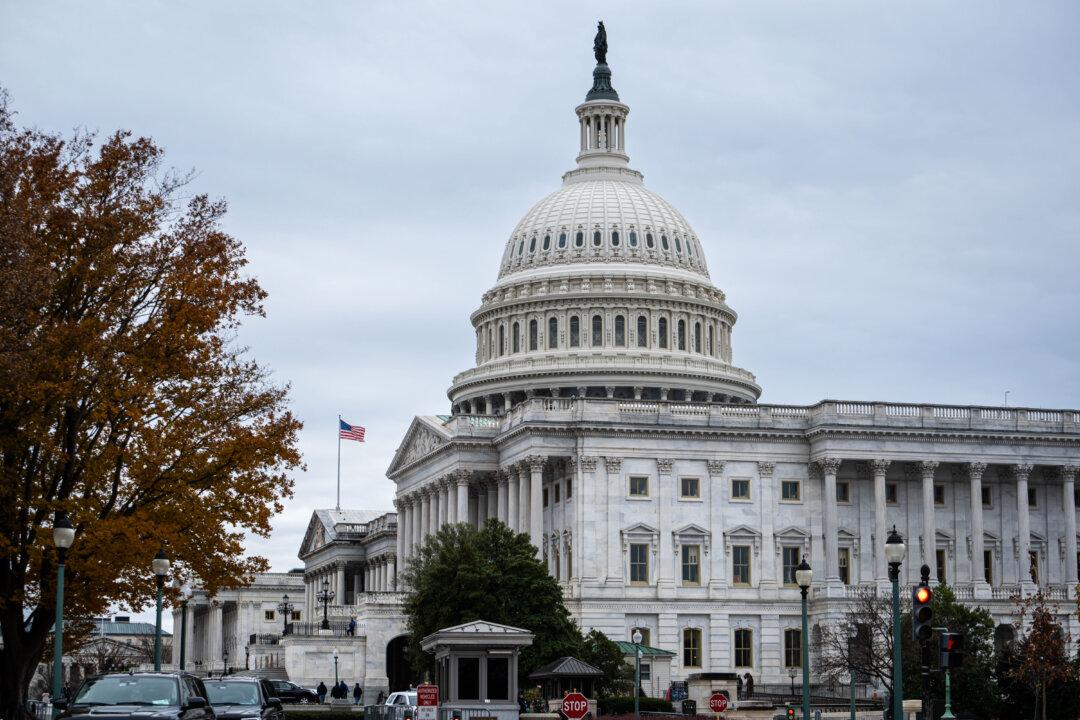All contenders for the U.S. presidency agree that U.S. Steel as a company should stay under American ownership and should not be sold to Japanese firm Nippon Steel for $14.1 billion. This is despite Nippon’s promise to retain all American jobs at union wages, upgrade all facilities, and generally save the company. Otherwise, U.S. Steel will most likely have to leave Pittsburgh, its home since 1901, and close factories.
It seems crazy not to accept that deal, doesn’t it? Well, considered in isolation, it probably is. The United States has long encouraged “friend shoring” as an option for shipping factories overseas. That’s what this is. A decision by the U.S. government to block it against the company’s own wishes would be an extraordinary intervention and could discourage future foreign investment in the United States. Moreover, there seems to be no future for the company under the status quo.
Even then, there is tremendous resistance in the United States, probably for reasons of culture, nationalism, and deep history.
Keep in mind that U.S. Steel as an entity is a watchword for what was once considered American greatness. It contributed to the infrastructure of nearly everything in modern America. Its purchase by foreign owners would seem to write the final chapter of American-owned industry and manufacturing, if only symbolically.
It matters too that the controversy affects a swing state. Neither former President Donald Trump nor Democratic candidate and Vice President Kamala Harris want to be seen as favoring foreign over American ownership, even if it makes economic sense. In that sense, this comes at the worst time, just before a presidential election.
That said, there are even deeper issues.

This controversy comes fully 40 years after U.S. industry and manufacturing began being systematically cleaned out by foreign competition. The list of lost or largely lost industries is a sad one: clocks, textiles, apparel, steel, shoes, toys, tools, semiconductors, home electronics and appliances, shipbuilding, and much more. These closures have gutted cities and towns of industries that were not easily converted to other purposes, leaving carcasses of facilities to remind residents of a time gone by.
What remains are small boutiques making high-end products priced far higher than the mainstream market. They appeal to the elite, unlike the tradition of American manufacturing, which was focused on making products for everyday consumers.
At each stage of loss, there were protests and expressions of rage, but even that stopped at some point in the face of the relentless shift. People tried to ignore the long-term implications, but by 2016, Trump successfully turned it into a political issue. The problem of American manufacturing losses dominates all his speeches now. It is extremely important to him. He believes that tariffs are the solution. In taking this view, he departs from the consensus the Republican Party maintained for decades of favoring low tariffs and free trade.
Market defenders have long said that manufacturing loss is just what happens when half the world that was previously closed opens up, Japan first and then China in particular. The division of labor expands globally, and there is nothing to be gained by taxing citizens to preserve manufacturing that can take place more efficiently elsewhere. Consumers benefited greatly. Adjustment by the production sector was inevitable, unless you wanted to pretend the rest of the world did not exist.
But along with that, other problems were brewing, factors that complicated the picture and raised serious questions about whether we were really seeing the meritorious unfolding of a normal global marketplace.
Free-floating exchange rates with a global dollar standard based on fiat gave the strong impression that the United States was actually exporting its economic base as the world central bank accumulated dollars as assets, without the natural corrections that would have happened under a gold standard. Those natural corrections would otherwise involve falling prices in importing nations and rising prices in exporting nations, leading to a rebalancing of the two.
The balance can never be perfect of course but there is a reason that the United States in its postwar history never ran consistent, much less rising, trade deficits until 1976 and following. For decades now, the merchandise trade deficit has done nothing but bleed red. What might it indicate?

Free trade economists from David Hume in the 18th century to Gottfried Haberler in the 20th century have long explained that trade is no threat to domestic production because of what is called the price-specie flow mechanism. Importing nations become exporting nations and back again depending on money and goods flows. The price system provides the adjustment.
That mechanism absolutely stopped working in 1971. It was deliberately broken, we may even say.
That changed matters substantially, and for decades now the United States has stood by as mountains of U.S. debt assets served as collateral for foreign central banks to use in building up their manufacturing base to directly compete with the United States, with no settlement system in place at all. The reality is reflected in the trade deficit data but also in the loss of capital, infrastructure, supply chains, and skills that once made America the world’s leader in consumer goods manufacturing.
The two biggest beneficiaries of this U.S. subsidy in the 21st century have been Japan and China. It’s not a stretch to observe that Japan’s proposed purchase of U.S. Steel is assisted by vast subsidies of U.S. debt held by its central bank, which is a main provider of industrial credits. Right now, Japan is the largest holder of U.S. debt in the world, with fully $1.1 trillion rattling around in its vaults.
One might suppose that a nation with a currency deployed as the main reserve asset for the world would be well positioned but there is a paradox: The endless creation of new units for the world threatens domestic production over time. That is textbook trade theory, and it has come true in brutal ways.
Even as this manufacturing shift took place abroad, business creation became ever more difficult at home with high taxes and intensifying regulatory controls making enterprise ever less functional. Such costs ended up making competition more difficult to the point that waves of bankruptcies were inevitable.
Meanwhile, the managers of the price level could never tolerate a rising purchasing power in response to money/debt exports and goods imports, and continued to replace outward money flows with new supplies so as to prevent “deflation.” As a result, the price-specie flow mechanism of old simply ceased to operate.
And that was only the start of it. Henry Hazlitt in 1945 explained that balance-of-trade problems in nations are never the central problem but rather are symptomatic of other bad policies.
Hazlitt listed all the factors that make a nation less competitive: “These may consist of pegging its currency too high, encouraging its citizens or its own government to buy excessive imports; encouraging its unions to fix domestic wage rates too high; enacting minimum wage rates; imposing excessive corporation or individual income taxes (destroying incentives to production and preventing the creation of sufficient capital for investment); imposing price ceilings; undermining property rights; attempting to redistribute income; following other anti-capitalistic policies; or even imposing outright socialism. Since nearly every government today—particularly of ‘developing’ countries—is practicing at least a few of these policies, it is not surprising that some of these countries will get into balance-of-payment difficulties with others.”

The United States has done all these things, including not just pegging the currency too high, but also becoming the world reserve currency and the only currency in which all energy trades took place, together with subsidizing the industrial buildout of nations around the world to compete directly with American firms, even as the U.S. economy has become ever less adaptable to change.
In other words, the problems were not due to free trade as traditionally understood. In fact, the idea of “free trade” was unnecessarily scapegoated throughout. Nonetheless, it has lost popular support as a misleading cause-and-effect explanation has proven highly tempting: Free trade abroad leads to domestic decline.
Decades have gone by and the backlash is now fully here. Left and right have both agreed to abandon global economic liberalism in the face of all evidence that “free trade” is not going as planned. Now the backlash is so intense that foreign ownership of historic plants within the United States is considered intolerable, even if forbidding the transaction could mean closing down whole factories.
Economists can yell and scream that allowing the buyout only makes sense and that blocking it is nuts. They are correct but there is a larger context here that involves grave mismanagement of the domestic economy and the monetary system that has made all of this inevitable, including these chronic trade deficits. No nation in the history of the world can possibly tolerate the gutting of its productive capacity without provoking a political backlash.

The resentment here is real and likely unstoppable. What is the answer? Without going into the specifics of the U.S. Steel case, there is a way to save and restore American industry and American manufacturing without resorting to high tariffs, industrial policy, or blocking foreign investment.
The real answer is a dramatic domestic reform: vast deregulation, clearing out all the labor mandates, balancing the U.S. federal budget, and implementing a sound monetary system that does not rely on the infinite printing of ever more debt. If these policies were implemented as emergency measures, U.S. Steel as an American-owned company could be saved and become globally competitive again.
As it is, however, these positions have lost their cachet in public culture and hence we have a choice: give up the prize to Japan or shut it down forever. These are the tragic consequences of policy mismanagement dating back decades. The controversy is but a symbol of a much larger and deeply tragic story.








